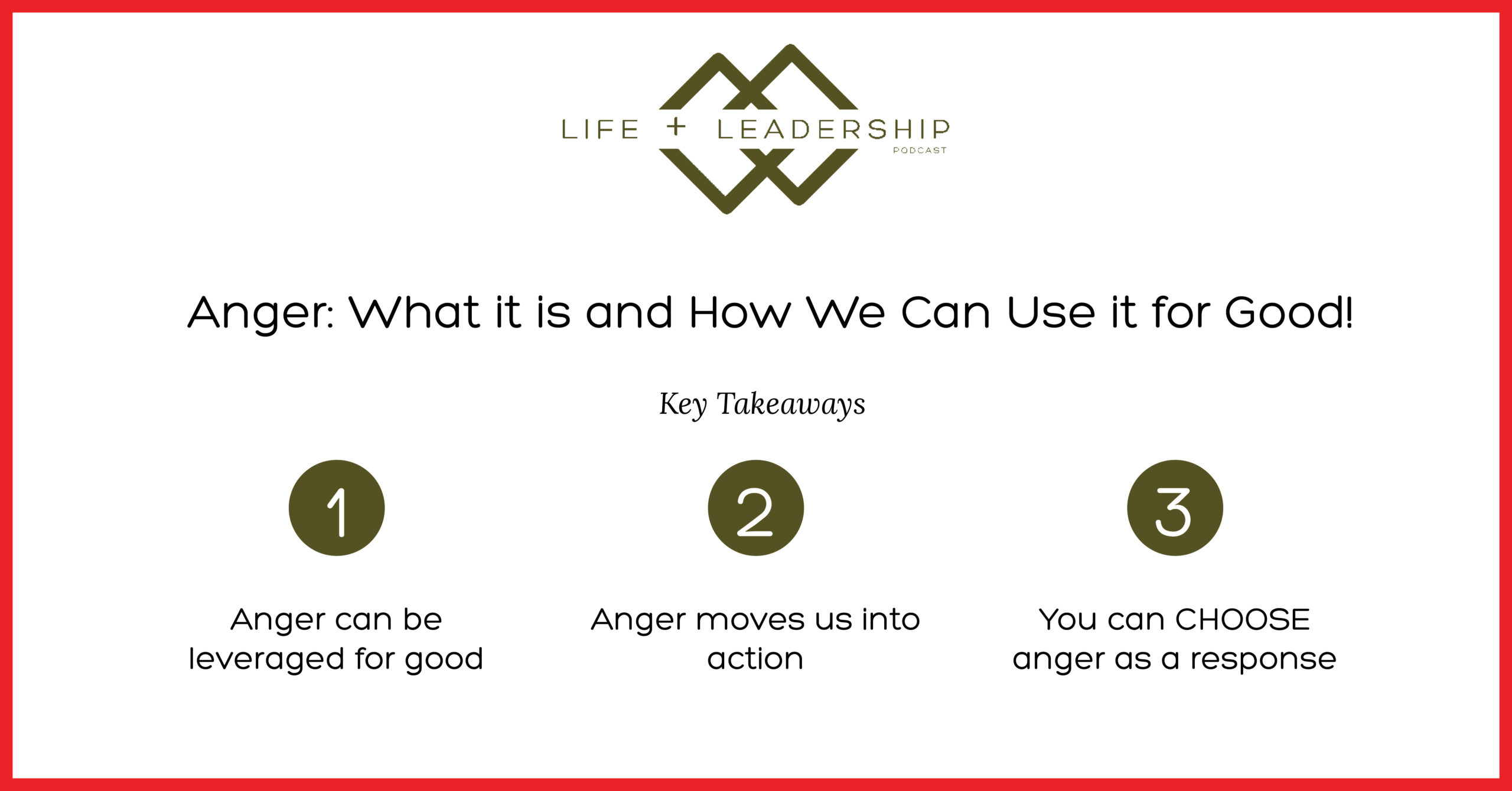“Anybody can become angry. That is easy. But to be angry with the right person and to the right degree and at the right time and for the right purpose and in the right way? That is not within everybody’s power—and is not easy.”
—Aristotle
We’ve been socialized to see anger as a bad thing. So, we ignore it and let it fester. Or we lose control and unleash it. But what if there’s a third option? What if we can learn to work WITH our anger and channel it to, say, solve problems or fight for justice? What if we can use our anger for good?
Today, we’re discussing where anger comes from and what purpose it serves. We address the stigma around anger in our culture, reframing it as a neutral emotion that has benefits when we can choose it as a response.
We go on to explore the relationship between the way anger is modeled for us as children and our ability to name and express it as adults. Listen in for insight into the research on gender differences and anger at work and learn how to leverage your anger to take action for the greater good!
Themes explored in this week’s episode:
- The definition of anger and what inspired Tegan’s deep dive on the subject
- The stigma around anger in our culture and why so many of us try to pretend it doesn’t exist
- Where anger comes from and the purpose it serves in removing obstacles
- The questions around whether anger is a primary or secondary emotion
- How the way anger is modeled for us as children impacts our ability to name and express it as adults
- The benefits of anger in terms of motivating us to solve problems and fight for justice
- Choosing anger as a response rather than a reaction that is out of our control
- How our biological perception of men’s vs. women’s faces influences the way we receive anger based on gender
- Why female leaders who express anger at work are perceived to be less competent than their male counterparts
- Our top strategies for working with your anger and leveraging it for good

Resources from this episode:
- Watch this episode of the podcast on the Life & Leadership YouTube Channel
- Learn more about the Energy Leadership Index Assessment
- Review the 2019 Gallup Global Emotions Report
- Read J. Ruth Gendler’s description of anger personified in The Book of Qualities
- Explore Dr. Ursula Hess’ research on the communication of emotions
- Discover The Field Guide to Human Emotions by Dan Newby and Curtis Watkins
- Check out the Fall 2019 issue of Tricycle magazine on the topic of anger
- Look at Ursula Hess’ chapter on anger in The Positive Side of Negative Emotions
- Study the positive side of anger with these articles in Good Therapy, Emotion Researcher, Psychology Today and Sharecare
We would love to hear from you! Have an idea for a podcast or a question you want us to address? Interested in additional support, resources and workshops? Here are all the ways you can interact with us!
- Tweet us! @tegantrovato and @TeamAwesomeMKE
- Email us: tegan@BrightArrowCoaching.com and Katie@TeamAwesomeCoaching.com
- Follow us on Facebook @BrightArrowCoaching and @TeamAwesomeCoaching
- Follow us on Instagram @TeganTrovato and @katie_rasoul
- Connect with us on LinkedIn: Tegan Trovato and Katie Rasoul
- Download free tools and sign up for our newsletters, events and workshops by visiting: https://www.brightarrowcoaching.com/ and https://www.teamawesomecoaching.com/
Quotes from the episode:
Tegan—
“I’ve started to see anger like this poor little kid on the playground that people are just pretending is not there.”
“Anger is associated with goal-obstruction and the need to remove the obstacle.”
“[Anger] is really just an alert from your body to inform you that something’s wrong, so we certainly don’t want to ignore it.”
“Where it can go wrong is that we can sometimes use anger to cover up other painful feelings. We may actually be feeling fear, anxiety, vulnerability [or] shame … and anger is the secondary emotion.”
“Individuals who express anger, in general, are perceived not only as threatening, but also as competent, powerful and dominant.”
“What is your anger trying to tell you? What’s the message?”
Katie—
“Anger is often called a secondary emotion because we tend to resort to anger in order to protect ourselves or cover up some vulnerable feelings.”
“I don’t HAVE more anger. I EXPRESS more anger now.”
“[Anger] can be a foundation for altruism and positive acts.”
“[Anger] can motivate people to take action, and I think that’s the biggest benefit. So, if we say it’s not good or bad, but maybe this is a way where I can use this intentionally-placed anger—if we can choose that as a response versus a reaction that is out of our awareness and control, then it can be really powerful.”
“Where is your anger going when you don’t express it?”



Recent Comments